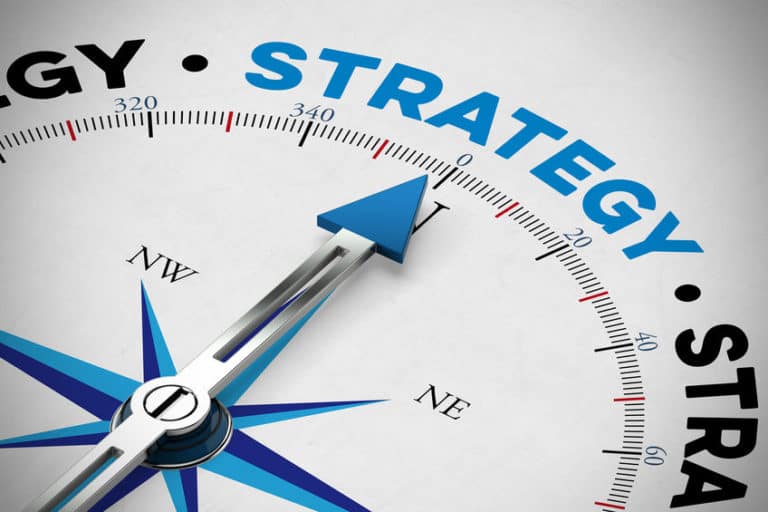What is a Product Vision?
A product vision brings the future into everyday work. It helps the entire organisation understand the larger purpose of the product. When done right, it inspires and motivates everyone to do their best work. A product vision is typically, somewhere between two and five years out.
How a product vision is communicated to teams is a matter of context and organisational preference and the methods and options vary greatly.
Writing things down is still the best way to communicate product visions when face-to-face collaboration is impractical and when key decisions and product inception/discoveries need to persist over time to communicate aspects of the product vision and strategy .
.
Without a clear product vision, many product teams have trouble seeing the big picture. They change course often and tend to disagree on what to do next. It can feel disorienting and demotivating when you cannot tie your work to the value it provides.
A product vision can be seen persuasive and maybe in form of a narrative or even a prototype called a visiontype .
.
Table of Contents
Product Strategy
A product strategy helps to provide a sequence of product releases to deliver the product vision. The product strategy should have a product/market fit.
Marty Cagan in his book Inspired – How to Create Tech Products Customers Love provides a good short difference between product vision and product strategy: the difference between vision and strategy is analogous to the difference between good leadership and good management. Leadership inspires and sets the direction, and management helps get us there. Most importantly, the product vision should be inspiring, and the product strategy should be focussed.

Product Vision – Scrum Guide 2020 Inclusion of Product Goal
The inclusion and specific mention of the product goal in the November 2020 scrum guide update , will provide a trigger for people to search for useful product goal or product vision templates; or examples of how to articulate a product goal or product vision.
, will provide a trigger for people to search for useful product goal or product vision templates; or examples of how to articulate a product goal or product vision.
There is a need for organisations to have a product vision to communicate this vision and inspire their teams, stakeholders, partners and investors.
What is a Product Goal?
The scrum guide states that the product goals help realise the product vision and business objectives. Product goals should connect to the broader product strategy. Product goals should be easy to understand and be actionable, achievable, and measurable.
states that the product goals help realise the product vision and business objectives. Product goals should connect to the broader product strategy. Product goals should be easy to understand and be actionable, achievable, and measurable.
The product goal from the scrum guide describes a future state of the product which can serve as a target for the scrum team to plan against. The product goal is in the product backlog. The rest of the product backlog emerges to define “what” will fulfil the product goal. The product goal is the long-term objective for the scrum team. They must fulfil (or abandon) one objective before taking on the next.
A product roadmap can be developed to provide direction of the product in terms of product releases and provide a direction of how the product vision will be realised over time.
can be developed to provide direction of the product in terms of product releases and provide a direction of how the product vision will be realised over time.
The product goal is a vital part of the product backlog. Agile teams can use the product goal to plan against and maintain focus.
The product owner is accountable for developing and explicitly communicating the product goal. During sprint planning the product owner should make sure that the most important items are prioritised at the top of the backlog and ensure that the team understands how they map to the product goal. This provides the context that the product team relies on for each decision that impacts the future of the product.
Each sprint should bring the product closer to the overall product goal. Progress toward the product goal should be discussed in sprint reviews.
Product goals give you something to work towards so you can deliver a better product to customers. Setting goals requires you to define what you want to achieve and how you will measure success.
Product Vision Template
No matter the form of approach, a product vision or product goal template should serve as a prompt of the things that need to be described to teams to gain a shared understanding of what they are about to build and how the product will serve end users and customers.
In large digital transformation programs, the product vision plays an even greater role, serving as the umbrella document for a large product initiative.
With respect to agility, it is important to note that a product vision does not need to be long and can be a lightweight artefact.
I first got introduced to the artefact of a product vision from the Rational Unified Process (RUP) vision document when working within the Rational Unified Process (RUP)
from the Rational Unified Process (RUP) vision document when working within the Rational Unified Process (RUP) . The RUP vision document serves as a document to collect, analyse, and define high-level needs and features of the product. It focuses on the capabilities needed by the stakeholders, and the target users, and why these needs exist.
. The RUP vision document serves as a document to collect, analyse, and define high-level needs and features of the product. It focuses on the capabilities needed by the stakeholders, and the target users, and why these needs exist.
The RUP vision document provided a means whereby the context of the product can be described and provide a basis to determine the vision and direction of the product. It also provides a means where requirements can be elaborated or more importantly traced from needs to feature to product requirements (in the context of RUP this used to be use cases) from an agile perspective this is typically user stories.
In the agile context the RUP vision document is still a useful artefact in the Agile Software Requirements book by Dean Leffingwell there is a useful product vision template (based upon the RUP vision document).
there is a useful product vision template (based upon the RUP vision document).
Disciplined agile calls out a vision document within the inception phase and this has proved useful on many projects. What is key is that any product backlog has a direction of intent and this intent as per the scrum guide can be articular as a product goal or similar artefact.
and this has proved useful on many projects. What is key is that any product backlog has a direction of intent and this intent as per the scrum guide can be articular as a product goal or similar artefact.
Roman Pichler has a very good template (product vision board ) which many companies use. The product vision board template by Roman Pichler helps too describe, visualise, and validate a product vision and strategy. The template includes the captures of the target group, user needs, key product features, and business goals. Roman Pichler also has an extended vision board that describes key elements of the business model including competitors, revenue sources, cost factors, and channels.
) which many companies use. The product vision board template by Roman Pichler helps too describe, visualise, and validate a product vision and strategy. The template includes the captures of the target group, user needs, key product features, and business goals. Roman Pichler also has an extended vision board that describes key elements of the business model including competitors, revenue sources, cost factors, and channels.
The product vision board has become a useful replacement to the RUP vision document and because the template can be downloaded it has been a very good starting point for many organisations to use and adapt to their context.
Conclusion – Product Vision & Product Goals
In the reality of projects whether teams have a template or not there has always been the concept of a product vision or product goal and having such an artefact helps to make sure teams don’t forget (or at least ask the question) around product direction and vision.
No doubt more templates will start to appear now that product goal has been mentioned in the updated scrum guide.

